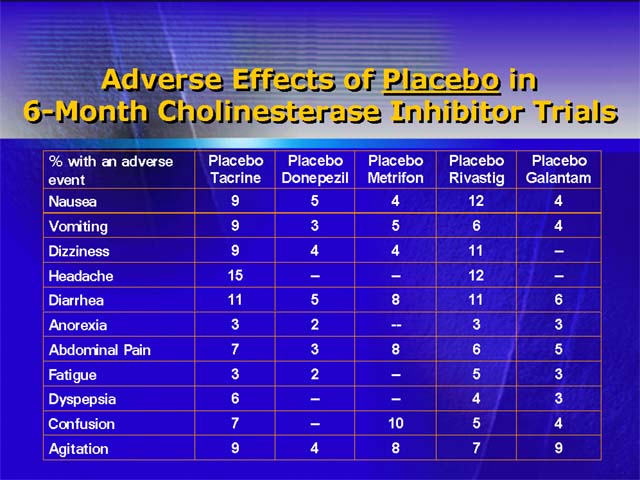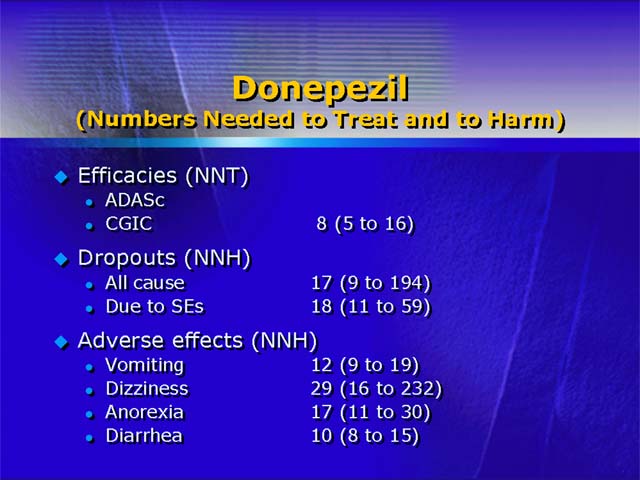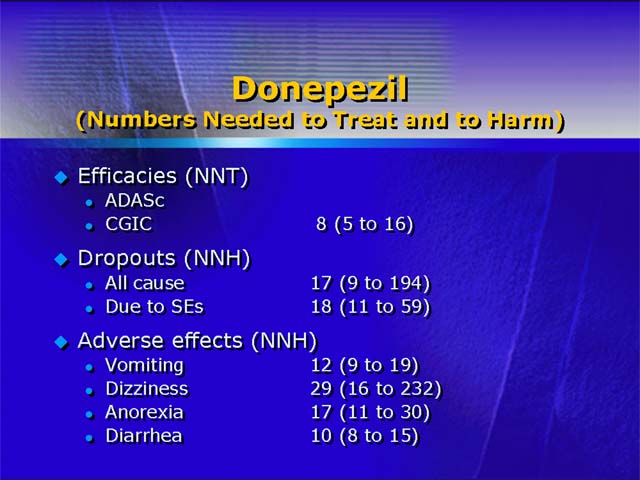Evidence-based medicine should guide clinical decision-making. Dr. Schneider presented comparative data on various cholinesterase inhibitors, including measures not often used in the literature.
Dr. Schneider noted that data are often presented to show clinical effectiveness of one drug versus another. Yet, assessing effects of one cholinesterase inhibitor may be difficult because of wide variability of placebo response. In some studies, placebo response is small and in others, it is large.

Presenting data from several studies of cholinesterase inhibitors, Dr. Schneider pointed out a statistically significant difference in frequencies of various adverse effects among patients treated only with placebo. He pointed out that from a purely statistical perspective, patients were more likely to have favorable outcomes when taking a placebo in the donepezil study than when taking a placebo in any of the other studies
Dr. Schneider concludes from his example that physicians must consider more than rates of occurrence of therapeutic or adverse effects when making decisions about medication. Two statistics he recommends are the number needed to treat and number needed to harm. The first statistic is the number of patients who are seen before a physician is likely to see one who benefits from the intervention. The number needed to harm is the number of patients who are seen before a physician sees one who has an adverse event or leaves treatment.
 Examining comparisons of donezepil with galantamine, he found that the number needed to treat was about the same (7-8 patients) for one patient to improve. The number needed to harm was 13 to 17 patients over six months.
Examining comparisons of donezepil with galantamine, he found that the number needed to treat was about the same (7-8 patients) for one patient to improve. The number needed to harm was 13 to 17 patients over six months.
Dr. Schneider also studied effects of galantamine at 24 mg/day, a dosage higher than is usually prescribed. A physician treating 50 patients is likely to find 7-14 patients who will either benefit or not deteriorate, four to eight patients who will drop out due to side effects or other problems, five who will have vomiting, two who will experience dizziness, and two who will develop anorexia. Sixteen to 34 patients, he added, are likely to experience no effects from the medication.
